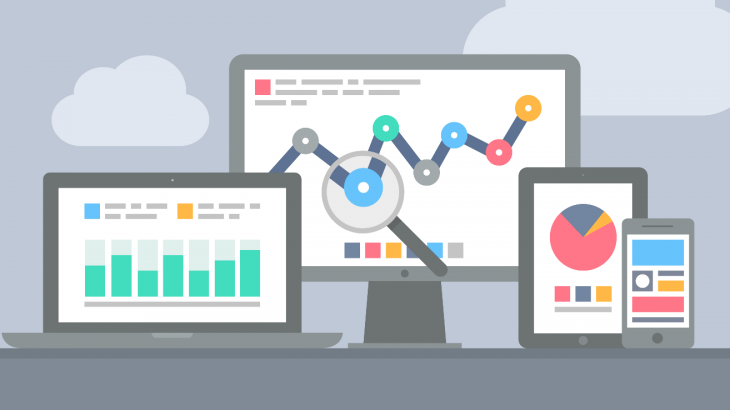Good Data Visualization design makes it easy to analyze data and get insights for your business. Luckily, there are certain data visualization best practices that can help you easily create effective data visualization. Here are 3 principles of good data visualization design that you can use to make your graphs & charts intuitive.
3 Principles of Good Data Visualization Design
Here are 3 principles of good data visualization design that you can use to build better dashboards.
1. Choose the Right Visualization
The most common mistake people commit in data visualization is to use the wrong type of chart/graph to present their data, making it difficult for users to get insights. Let’s look at an example.
In which of the two charts below is it easy to spot a sales trend?

In the column chart, the sales trend is obvious, whereas in pie chart, you will end up wasting time between the chart legend and pie slices.
Here’s a simple diagram you can use to determine which data visualization to use for your data, depending on what you want to show. Most data visualization tools offer a wide choice of charts & graphs.

2. Provide Context
Businesses have reported 26% increase leads after using data visualization. However, Data visualization without context is meaningless. Providing the right context for your charts & graphs is one of the most powerful principles of good data visualization design. It helps viewers quickly understand what your data visualization is about. There are multiple ways to provide context for your visualizations
- Use Appropriate Titles that explain what your visualization is about
- Add footnotes to clearly mention caveats and assumptions
- Include axis labels to describe what X-axis and Y-axis stand for
- Make sure the entries in chart legend are intuitive
- If your chart elements such as pie slices, columns, bars, etc. have values that are very close, consider adding data labels to clearly distinguish between them
All these little elements have a profound effect on how your audience perceives information. Look at the 2 charts below. Which one do you think gives you more information?

Most BI Reporting tools allow you to easily add titles, footnotes, labels and other charting elements. Use them to your advantage.
3. Use Visual Cues to show relationship
You can also make your data visualization more insightful using non-verbal visual cues. For example, you can use the same dashboard color palette for all visualizations in a dashboard to imply they are part of the same organization/product/department/team. You can also keep it consistent with your brand’s colors, if possible.
You can also cleverly position related visualizations next to each other making it easy for viewers to compare data, and draw insights. Here’s an example of a sales dashboard created using Ubiq dashboard software 
You can use contrasting colors to highlight your point and push non-essential items into the background. It will make your dashboard look professional.

There are many other principles of good data visualization design but the above-mentioned ones are simple and easy to implement for any business. Hopefully, the above 3 principles of good data visualization design will help you create intuitive graphs and reports for your business. Nevertheless, always begin by gathering business reporting requirements from your target audience.
If you want to create business dashboards, reports & charts, you can try Ubiq. We offer a 14-day free trial!
